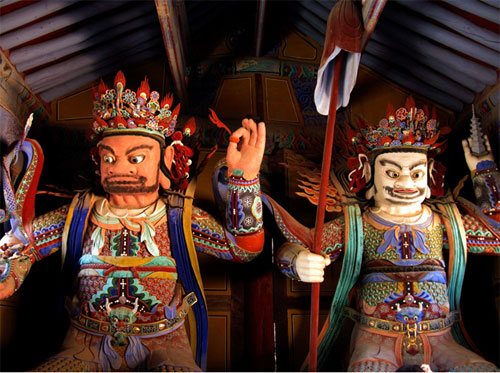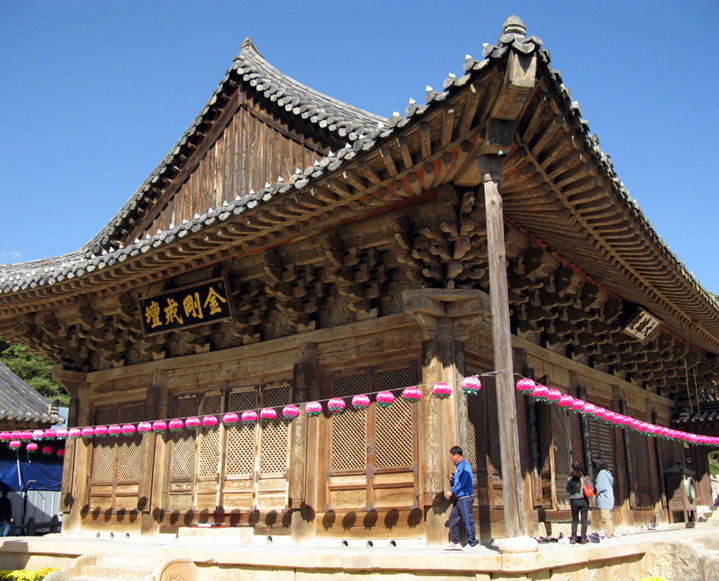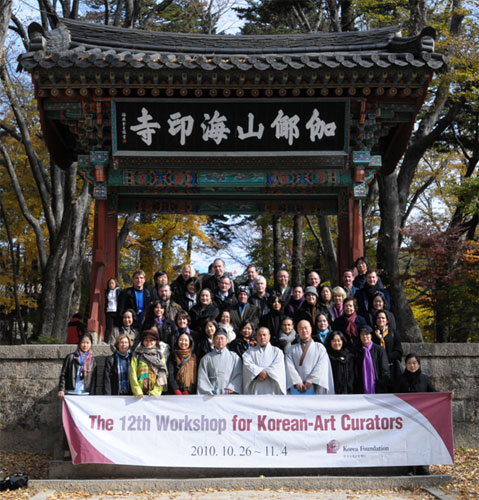Between late October and early November I attended the 12th Workshop for Korean-Art Curators hosted by the Korea Foundation. These annual workshops allow curators working with Korean collections from around the world to learn about an aspect of Korean culture in depth and at first hand in a way that might otherwise be difficult to do. As such they are always an invaluable way in which to learn about up to date scholarship and issues in an area of Korean material or visual culture. The theme of this year’s workshop was the ‘Identity of Korean Buddhist Art in the East Asian Context’.
Part of the workshop was based in Seoul where workshop participants also spent a day attending the National Museum of Korea symposium on “Goryeo Buddhist Paintings in the Context of East Asia.” This symposium accompanied a major exhibition of Goryeo period (918-1392) Buddhist painting being held at the National Museum of Korea. Entitled Masterpieces of Goryeo Buddhist Painting, this stunning exhibition brought together for the first time in history 61 of the 160 or so extant Goryeo period Buddhist paintings together with comparable Buddhist works from China’s Southern Song (1127-1279) and Yuan (1279-1368) periods, and Japan’s Kamakura period (1185-1333). Buddhist painting of the Goryeo period is renowned as being one of the finest expressions of Buddhist painting of any period, so it really was a unique opportunity to see this many paintings of the period, and was certainly the exhibition highlight of my year.
Apart from Seoul, the workshop also travelled to other cities and regions of South Korea including Pusan, Daegu and Gyeongju. The workshop combined a busy schedule of in-depth lectures on aspects of Korean Buddhist art and architecture given by leading scholars of Korean Buddhism, with visits to museums and important Buddhist sites. Among the sites visited were the world-famous Haeinsa Monastery (founded in 802), housing the 81,000 woodblocks of the Buddhist texts of the Tripitaka Koreana (dating from the 13th century) as well as the monasteries of Tongdosa (founded in 646), Bulguksa (founded 751), Gameunsa (founded late 7th century), Bongjeonsa (founded in 794), and Buseoksa (founded in 676), and the Seokguram Grotto (founded in 742). In addition to all of these sites being designated national treasures within Korea, Haeinsa, Bulguksa and Seokguram have had their importance recognised on a global level with the awarding of UNESCO World Heritage status.




A significant aspect of the workshop is the opportunity it presents to meet with curatorial colleagues from around the world. With over 40 curators attending from museums across the UK, Europe, North America, Australasia and Asia the workshop proved a valuable opportunity to hear about and discuss the issues and projects colleagues in other museums are currently engaged with. In addition, one morning of the workshop was given over to a Participant’s Presentation at which a few curators are asked to present on their Korean collections each year. This year I was given the opportunity to present, and used it to introduce National Museums Scotland and its Korean Collection. This proved an excellent opportunity to raise the profile of both National Museums Scotland and its Korean Collection within an international context, as well as to highlight the greater emphasis which will be given to our Korean Collection in the reinstalled Ivy Wu Gallery, and to outline some of the changes the institution is currently undergoing in the form of the Royal Museum Project.
Apart from the 10 days of the workshop I also spent a few days in Seoul where I seized the opportunity to visit as many museums and galleries as time allowed. Among those visited was the impressive Horim Art Centre in Sinsadong, in southern Seoul, which had exhibitions of Goryeo cheongja green-glazed ceramics on one floor and Joseon period (1392-1910) ritual buncheong stoneware vessels used in Joseon state rituals. I also found time to visit the Seoul Museum of History, the Korean National Folk Museum, the permanent galleries at the very impressive National Museum of Korea, as well as to make visits to a number of private galleries, craftsmen and painters with whom I established links.
As on previous visits to Korea I was again impressed by the great friendliness, hospitality and courtesy of the Korean people, Korea’s rich history and culture, the beauty of the Korean landscape, the impressively high standards of Korean museums, and of course by Korea’s fantastic cuisine.

